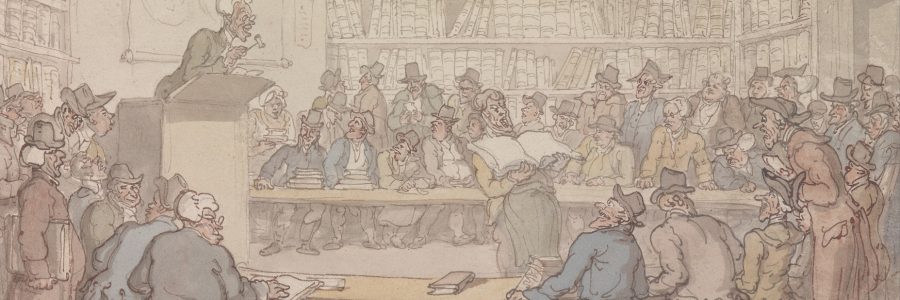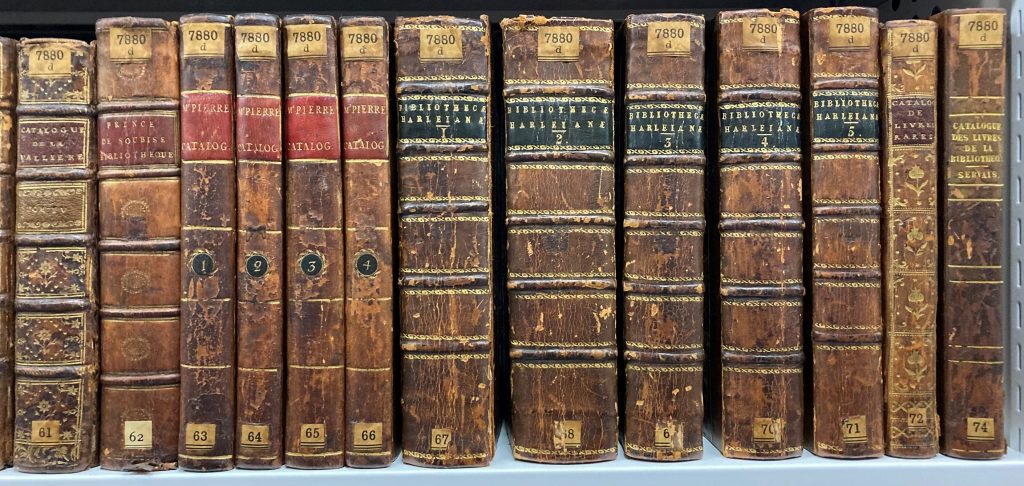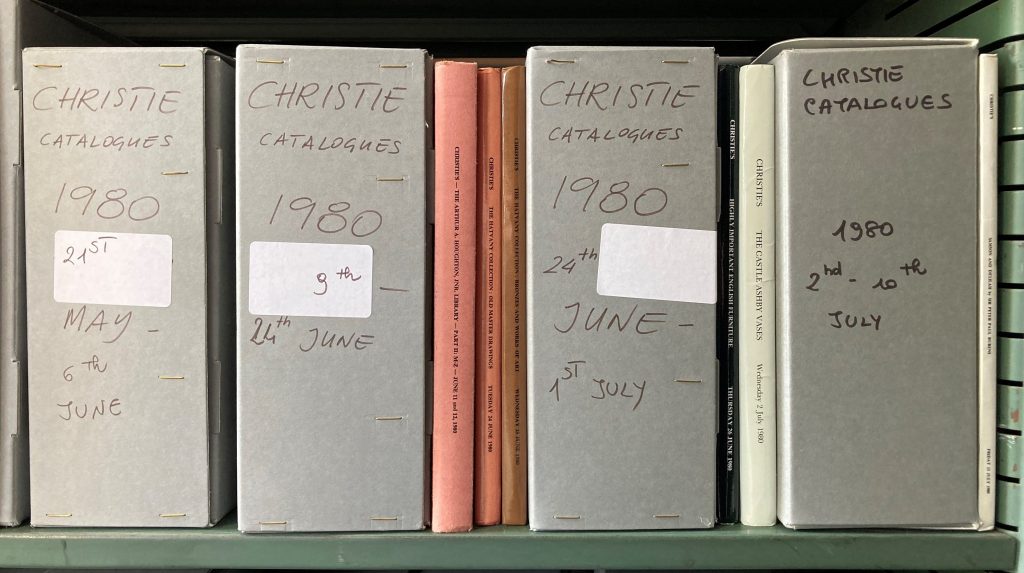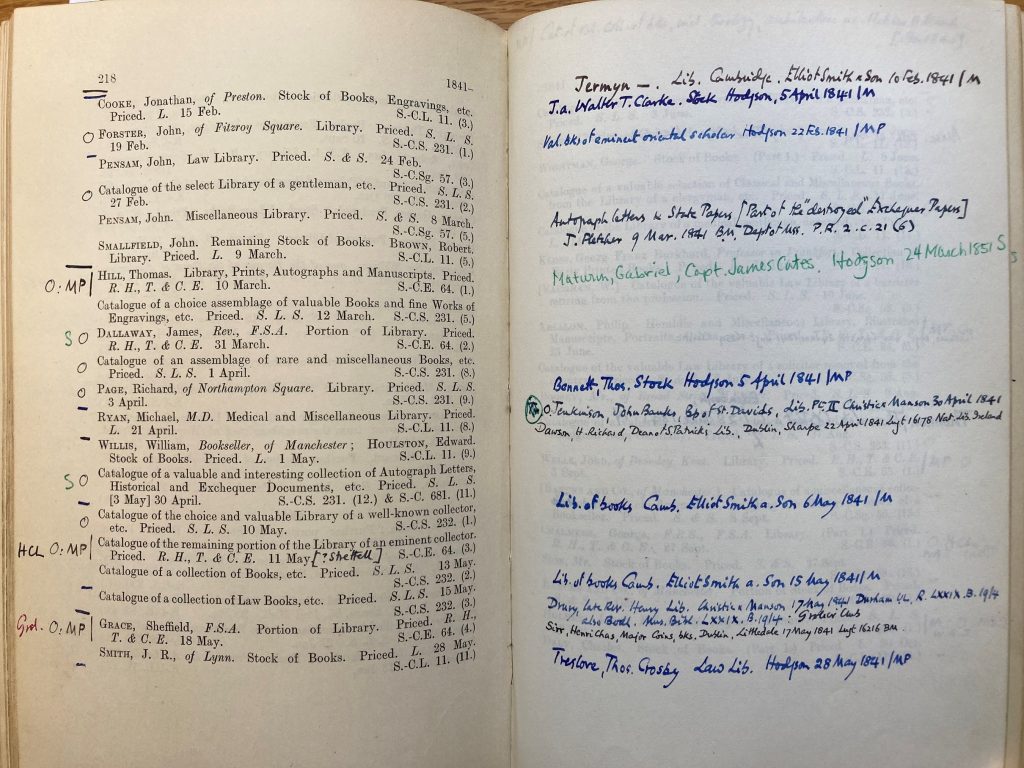
Book sales catalogues now listed
In the course of our work as curators we receive hundreds of booksellers’ and auctioneers’ catalogues every year, many now in digital form, but plenty which arrive in hard copy through the post. The Library has been actively purchasing special collections at auction since the eighteenth century (many of the books now in our Adversaria class of annotated printed books were bought by University Librarian Richard Farmer for the UL at Anthony Askew’s auction in 1774) and many of the sale catalogues marked up with notes on prospective purchases by Librarians including Henry Bradshaw and Francis Jenkinson in the late nineteenth and early twentieth centuries are still on our shelves.

There is, however, a divide between early catalogues and the more modern ones. Those printed in the seventeenth and eighteenth centuries for example (the first English book auction by catalogue took place in 1676) largely came onto our shelves as part of private libraries (including from John Moore in 1715 and A. N. L. Munby in 1975) and are largely catalogued and accessible. Those earlier catalogues acquired more recently are generally to be found in the class 7880 in the Rare Books Department, and a collection of about 1700 mostly nineteenth-century catalogues deposited by Trinity College has recently been listed in a spreadsheet. Various printed guides to these collections exist and information can be found online. Two copies of the 1915 List of catalogues of English book sales, 1676-1900, now in the British Museum are especially interesting; the Rare Books Room reference copy (B885.1) is annotated with classmarks of the UL’s copies, and Tim Munby’s own copy (Munby.c.532) contains details of thousands of extra catalogues discovered by Munby over the course of thirty years’ research. Munby’s own collection, most of which was acquired by the Library following his death in 1974, is listed in Munby.a.16, and contains about 1100 auctioneers’ and booksellers’ catalogues from the seventeenth century onwards. The majority of the collection can be found in iDiscover, but some runs of nineteenth-century booksellers’ catalogues have not yet been fully catalogued.
The catalogues which have arrived for staff use from the middle of the nineteenth century to the present day have not, until recently, been considered as a resource which researchers might be interested in. From the 1970s our holdings are listed in handwritten shelf lists, but to find earlier catalogues it has long been a case of staff going to the shelf (where catalogues are arranged chronologically by auction house or bookseller) to see if the relevant catalogue was there. But increasingly book sale catalogues are being used by researchers for a variety of reasons, as a recently-published collection of essays shows: not only do they preserve the contents of long since dispersed collections, but they can help in tracing the provenance (copy-specific history) of individual books, tell us much about the value of certain kinds of books at various periods, and reveal much about auction practices. Some regular readers who knew to ask for particular catalogues were usually rewarded but for most these extensive holdings have remained largely hidden. Until now!
For some years, a team of Reader Services Assistants in the Rare Books Room have been listing into simple spreadsheets our holdings of booksellers’ and auctioneers’ catalogues. Many are still in progress, but our holdings of the three primary auction houses – Bonham’s, Christie’s and Sotheby’s – have now been mounted on our website. The Bonham’s spreadsheet only begins in the 1990s and work to add earlier material is ongoing. But the Christie’s and Sotheby’s spreadsheets (beginning respectively in the 1880s and 1840s), each listing about 10,000 catalogues, are complete. Work to list the booksellers’ catalogues continues. Our holdings of Maggs and Quaritch catalogues, the great historic London booksellers with histories reaching back into the nineteenth centuries, are extensive, but other booksellers are also represented.

Anyone with a Library card is welcome to consult our book sales catalogues (joining the Library is very easy) and those not able to get to Cambridge are very welcome to contact us at rarebooks@lib.cam.ac.uk with queries about our holdings. It will take some time before everything is listed, but we will be very happy to check our shelves for you.

